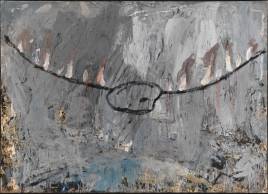
Anselm Keifer, Palette. 1981.

Anselm Keifer, Palette. 1981.
"Diving into a writers soul is discovering the broken treasure and beautiful mysteries that make you gasp for air."
Entertainment, travel and lifestyle blog
An online magazine focusing on philosophy, culture, and a collection of interesting ideas.
Immersive Tales for the Curious Explorer
Create ~ Discover ~ Engage
Images of North Cascades, Skagit Valley, the Milky Way and beyond
Where observation and imagination meet nature in poetry.
what it comes down to
Economics, chess and anything else on my mind.
Howdy! We're the largest independent bookstore in Texas. This is our blog.
The Contemporary Photobook Magazine
A books, movies, and more blog from the staff at the Carnegie Library of Pittsburgh - Main.
A Literary Blog
by Kent Bowker
A Literary Blog
A Literary Blog
A Literary Blog
A Literary Salon Where All Are Welcome